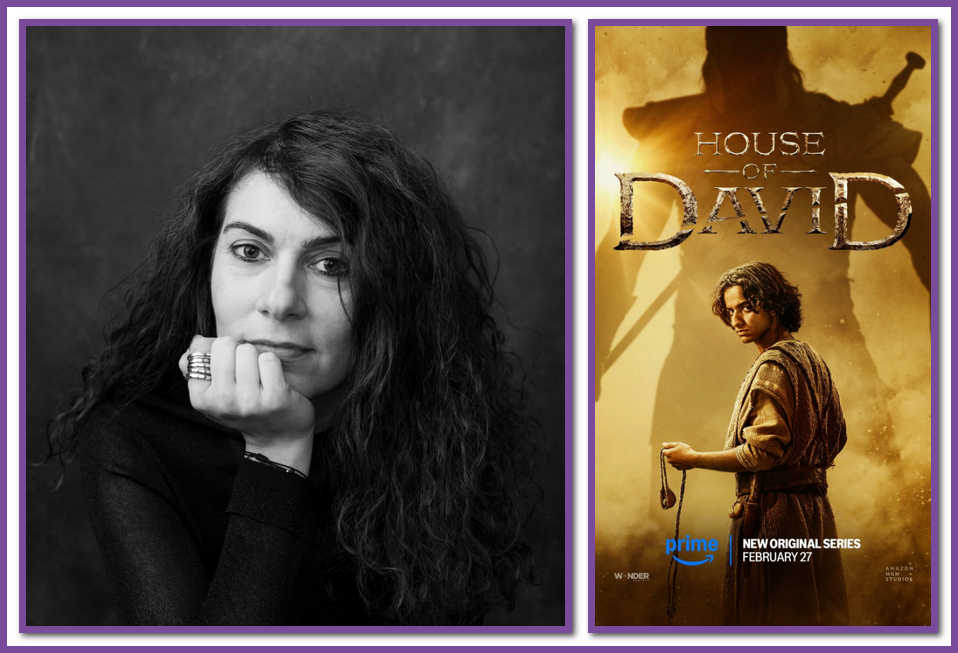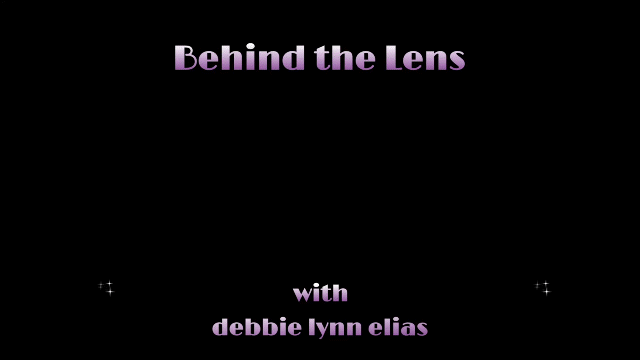
An in-depth exclusive interview with costume designer MAYOU TRIKERIOTI discussing going down the rabbit hole and into Biblical times, designing costumes for Prime Video’s HOUSE OF DAVID.
SYNOPSIS: Set in 1000 BC as the once-mighty King Saul falls victim to his own pride, as an outcast shepherd boy, David is anointed as the second king. As Saul’s mental state deteriorates, David’s journey is marked by challenges, including his famed duel with the Philistine giant Goliath.
Created by Jon Erwin, HOUSE OF DAVID stars, among others, Michael Iskander as David, Ali Suliman as King Saul, Alexander Uloom as King Achish, Oded Fehr as Abner, Martyn Ford as Goliath, and Stephen Lang as Samuel.
For costume designer MAYOU TRIKERIOTI, creating a biblical series like HOUSE OF DAVID involves several key challenges:
- Historical Accuracy: Researching and recreating costumes, settings, and cultural details from 1000 BC with limited historical documentation requires extensive research and creative interpretation.
- Religious Sensitivity: Balancing historical storytelling concerning religious narratives while making the series engaging for a broad audience.
- Costume Design: Developing authentic costumes using period-appropriate materials, techniques, and designs, including hand-stitching and natural fibers.
- World-Building: Creating distinct visual identities for different tribes, armies, and characters while maintaining historical credibility.
- Artistic License: Finding the right balance between historical accuracy and dramatic storytelling to keep the audience engaged.
- Scale and Complexity: Managing large-scale production with numerous background actors, intricate costume details, and multiple cultural influences.
- Audience Perception: Overcoming potential resistance from viewers who might be hesitant to watch a biblical adaptation.
The key, however, is to tell a compelling human story that transcends religious boundaries, focusing on the heroic narrative while maintaining visual and historical authenticity.
At the outset, Mayou’s greatest challenge was being true and faithful to a time where this is not any significant amount of information on dress, footwear, accessories, etc., which sent Mayou into a deep research dive in an effort to be immersive and authentic while also creating distinctive looks for different tribes and armies that would be visually engaging. Boasting the largest costume wardrobe created and assembled in television and film history in Greece (and this is just for Season One!), including the footwear, jewelry, armor, and crowns also designed by Mayou and made by her teams, all of the costumes were handmade, hand-stitched, and hand-embroidered before going through distressing and aging to fully customize them to tribal association, social status, and each character’s individual story.
I love and appreciate costume design and what goes into it, particularly in a period piece like HOUSE OF DAVID. From the fabrics themselves to the embellishments to the cotton threads, the metallic threads, the finishing techniques, the aging, and the distressing, each piece, each step of the design process, and ultimately the end result, tells us who each person or people is. And with HOUSE OF DAVID, the exacting detail and minutiae that bring these costumes, these characters, and this world to life are astounding.
As MAYOU TRIKERIOTI deconstructed her costume process much in the same fashion as a garment, talk turned to authenticity and attention to historical accuracy and Mayou’s research efforts to achieve that accuracy. As we discussed specific individuals, tribes, and individual costumes, Mayou noted the use of natural fibers and the method of hand stitching, as well as the purposely unfinished hems and sleeves of garments. No bias tape or rolled edges on these costumes! No buttons or zippers. No elastic. Shaping of a garment was done in many cases by draping, folding fabric and tying a sash to give the garment the appearance of some structure.
Interesting is the discussion on the influences of Greek and Egyptian cultures in the designs and the significance of colors like silver and blue for the Philistines, and earthy tones for the Israelites, not to mention the need to take some artistic license for visual appeal.
Maya explained her color selection process through several key principles:
- Research-Based Approach
- Studied the world of 1000 BC extensively
- Explored traders’ routes and cultural exchanges
- Considered geographical influences from Greece, Egypt, and surrounding regions
- Color Palette Rules
- Used natural, earthy tones for Israelites (reds from flowers, browns from mountains, greens from trees)
- Created distinct color schemes for different groups
- Philistines used silver, blue, and gray (reflecting coastal/maritime influences)
- Saul’s court used more regal, vibrant colors
- Artistic Considerations
- Prioritized making costumes readable for the audience
- Used color to differentiate tribes, armies, and social classes
- Took artistic license while maintaining historical believability
- Fabric Selection Process
- Traveled globally to select fabrics
- Maya described a global sourcing approach for fabrics:
- International Locations –
- London, UK
- Paris, France
- Spain
- Greece
- Traveled extensively to find authentic materials
- Sourcing Strategy
- Picked up fabrics personally with her assistant
- Searched for natural fibers
- Considered historical trade routes
- Looked for fabrics with authentic weaves and selvages
- Selection Criteria
- Only natural fibers
- Period-appropriate textures
- Historically accurate weaving techniques
- Potential for hand-stitching and aging
- Collaborative Process
- Worked with her team to build mannequins
- Created visual mood boards
- Sent fabric samples to directors and producers
- Explored possibilities through extensive research
- Local Artisan Involvement
- Engaged local textile makers
- Used local craftsmanship to enhance fabric selection
- Incorporated regional textile traditions
The process was comprehensive, involving global travel, meticulous research, and a commitment to historical authenticity in fabric selection.
- Used only natural fibers
- Considered fabric origins (e.g., fabrics from Egypt, China)
- Storytelling Through Color
- Used colors to represent character backgrounds
- Created visual vocabularies for different groups
- Ensured colors felt authentic to the period
The goal was to create a visually coherent world that felt historically authentic while being dramatically compelling.
Local artisans and materials were a very big part of Mayou’s undertaking, particularly with leather goods for footwear and breastplates, and metal work with the handmade hammered and filigreed crowns. Each piece tells a story, a bit of history about the wearer. An interesting aspect of the conversation is Mayou’s work in designing jewelry and crowns, again looking to history to create and craft for the economic and political strata of the time.
An aspect of the costume design that may not seem that important at first blush is the footwear. Because of the terrain where the filming was taking place, the need to create comfortable and durable shoes involved several strategies:
- Multiple Tricks and Cheats: Developed special techniques to make shoes more comfortable for principal actors.
- Adaptability: Designed shoes that could withstand challenging shooting conditions, including:
- Rock climbing
- Horse riding
- Running on rocky and muddy terrain
- Extensive Fittings: Conducted multiple fittings with actors to ensure comfort and functionality.
- Leather Sourcing: Produced shoes using high-quality leather, with significant work done in Spain.
- On-Set Adjustments: Had shoe specialists available to make real-time modifications and prevent foot damage during intense scenes.
The goal was to create footwear that looked authentic to the 1000 BC period while ensuring actors could perform physically demanding scenes without discomfort or injury.
As we discussed some specific garments, one special piece that Mayou named “The Relic” was at the top of the list and the item she deemed most precious and significant: the scarf worn by Samuel (Stephen Lang). As a prophet who delivered messages from God, and the last judge of Israel as he transitioned the Israelites to a monarchy by anointing Saul as the first king, “The Relic”, or scarf, represented a handed-down piece of fabric with embroidery telling the story of Israel. A defining piece in the HOUSE OF DAVID, Mayou designed it with intentional details, including a tiny bit of David’s blue and multiple instances of embroidery done over time, rather than in one single embroidery session. She wanted the scarf to look like it had been worked on periodically, telling a story through its design.
And so much more!
TAKE A LISTEN. . .
by debbie elias, exclusive interview 04/04/2025
HOUSE OF DAVID is available on Prime Video.












